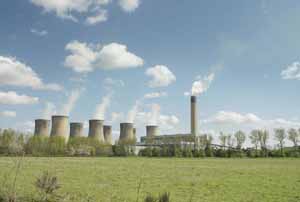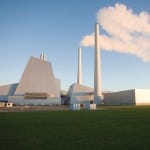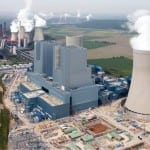RWE npower, the German energy company’s UK arm, on Tuesday said it would shutter its coal-fired 2,000-MW Didcot A Power Station in Oxfordshire and the 1,000-MW oil-fired Fawley Power Station in Hampshire at the end of March 2013 under the European Union’s (EU’s) Large Combustion Plant Directive (LCPD).
Didcot A and Fawley Power Stations were both opted out of the EU’s LCPD. That directive applies to power plants, refineries, steelworks, and other industrial processes running on solid, liquid, or gaseous fuel with a rated thermal input of more than 50 MW. The 2001-promulgated directive seeks to limit sulfur dioxide, nitrogen oxides, and particulates emitted from plants in member countries while encouraging combined production of heat and electricity (cogeneration).
Essentially, the LCPD imposes emission limits on plants built after 1987. Plants built before that year could choose to either comply with the directive through retrofits of emission controls or "opt out" of the directive. But a plant that chooses to "opt out" is restricted in its operation after 2007 and must close by the end of 2015 or after 20,000 operating hours (10,000 for oil) from January 2008.
“Both of these stations were built more than 40 years ago, and have been the unsung heroes of our economy ever since, helping to keep the lights on and Britain working 24 hours a day, 7 days a week,” said RWE npower CEO Volker Beckers in a statement on Tuesday.
The RWE plant closure announcements follow announced closures by E.ON of its 1,940-MW Kingsnorth coal plant by March 2013 and its 1,380-MW Isle of Grain oil-fired plant in December 2012. ScottishPower’s Cockenzie plant will also be shuttered at the end of March 2013. In total, six coal-fired plants and three oil-fired plants opted out from the LCPD, meaning that about 11.5 GW will be shuttered by 2015 or earlier.
Coal’s share of the UK’s total generation surged from 28% to 30% in 2011, an increase pegged to the declining share of gas generation, from 46% to 40%—the lowest level since 1999—due to high gas prices.
The future of coal power remains uncertain in the UK, however. The UK has proposed emission limits for carbon dioxide that will force new coal-fired power plants to be built ready for carbon capture and storage (CCS). Meanwhile, the previous Labour government passed a climate bill in 2008 that requires the country to slash greenhouse gas emissions from 1990 levels by at least 80% by 2050.
Though the UK seems committed to filling in coal’s absence with natural gas, gas generators could ultimately be required to install CCS technologies to help the country meet its carbon target, experts say. The UK may then be faced with a dire energy reliability predicament: seven plants of the UK’s aging nuclear fleet are scheduled to shut down by 2020, and while a new reactor at the existing Hinkley Point site is now being discussed, it may likely not come online by 2020.
Experts say that if plans for new nuclear plants falter on cost or safety concerns, biomass plants continue to depend on largely imported feedstock, and the private sector continues to be reluctant to fund offshore wind and CCS technologies, the country could be faced with an energy gap.
Sources: POWERnews, POWER, RWE npower, DECC
—Sonal Patel, Senior Writer (@POWERmagazine)









